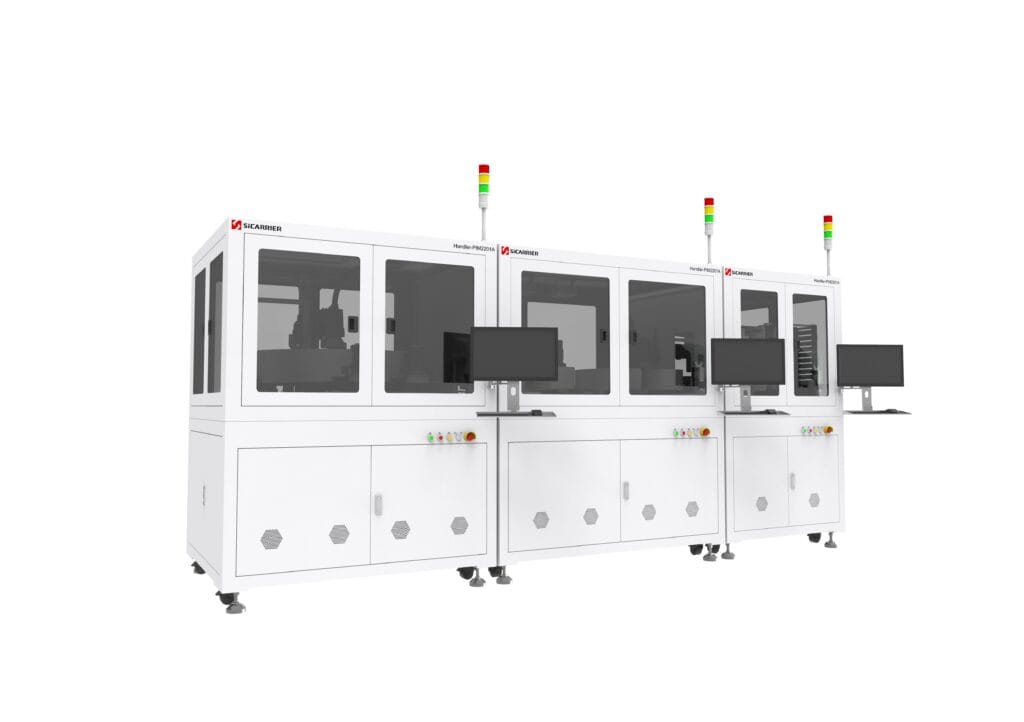At the SEMICON China 2025 trade fair, a young Chinese semiconductor equipment company, SiCarrier Technologies (新凱來), has captured international attention by publicly showcasing a 28-nanometer lithography system for 300 mm wafers, a key technology previously dominated by giants like ASML.
Founded in 2020 and backed by the Shenzhen government’s industrial fund, SiCarrier has developed around thirty pieces of equipment in just four years for critical processes such as atomic layer deposition (ALD), chemical and physical vapor deposition (CVD and PVD), etching, and electrical testing. While its 28 nm immersion lithography was not directly displayed, internal sources have confirmed that it meets international standards in key parameters such as overlay accuracy and light source wavelength.
A Direct Challenge to ASML
Wei Shaojun, director of the Microelectronics Institute at Tsinghua University, has described this innovation as “not only a technical milestone but a reconfiguration of the industrial ecosystem,” highlighting the so-called “Shenzhen strategy”: public funding, market-oriented execution, and attracting global talent. It’s no coincidence that SiCarrier’s technical team comprises veterans from companies like ASML and Applied Materials.
From Zero to Competing with the Giants in Four Years
Although still far from the miniaturization levels of 5 or 3 nanometers, the 28 nm lithography represents a critical frontier between mature and advanced technologies, being particularly relevant for sectors such as automotive, IoT devices, and power chips. The fact that a Chinese company has reached this technology signifies a significant leap in the country’s quest for technological self-sufficiency.

In addition, SiCarrier has begun deploying its etching and testing equipment at top-tier national clients like SMIC and Hua Hong, reinforcing its commercial legitimacy. According to its CTO, Chen Dong, the company is currently working in joint laboratories with multiple chip fabs and expects to publish data from its first commercial orders in the fourth quarter of 2025.
A Shift in the Global Supply Chain?
SiCarrier’s presentation comes at a crucial time: according to SEMI, in 2024 China represented 28% of the global spending on semiconductor equipment, with a domestic market valued at $320 billion, although the penetration rate of domestic equipment is still below 15%. SiCarrier’s advancements could change that figure, enhancing the resilience of the local ecosystem against international technological restrictions.
Ongoing Challenges and Next Steps
Despite the excitement, the road ahead is not without challenges. Experts point out that it is still necessary to demonstrate the full compatibility of these systems with existing production lines, as well as to ensure performance and reliability levels comparable to global leaders.
To achieve this, the company plans to expand its R&D network to more than ten Chinese cities and establish service centers in Europe and Southeast Asia. They are also working on versions of their equipment compatible with ASML and Applied Materials standards, according to their marketing director, Zhao Min.
A Wake-Up Call for the Global Industry
As Gu Wenjun, chief analyst at the specialized firm ICwise, cautioned, “the rise of SiCarrier is just the beginning.” While their trajectory is still in its early stages, their emergence symbolizes China’s entry into a new phase of competition in the manufacturing of advanced semiconductor equipment.
From WordPress to data centers and digital platforms, the impact of these technological advancements can be felt across the board, influencing costs, technological autonomy, and the stability of the supply chains that support much of the Internet and its key infrastructures.
Reference: SiCarrier

